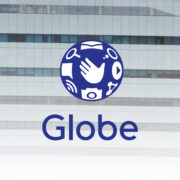The customer pain paradox: Why ignoring journey friction costs millions
The path of least resistance is always the one your customer will take. And if that path doesn’t lead through your business, it will lead straight to someone else’s.
Success relies not only on the quality of a product but also on the seamlessness of the customer journey. Embracing the concept of the “180-degree flip”—viewing your business through the eyes of an uninformed customer—isn’t just a best practice. It’s a necessity.
As someone who has advised and collaborated with many of the world’s most successful entrepreneurs, business leaders and many top global brands, I’ve seen first-hand how even the smallest overlooked friction point can cost millions. The world’s most successful companies obsess over every step of the customer journey because they understand a brutal truth: Friction kills conversion, trust and loyalty.
Walking the walk: Lessons from the top
Take Uber, for example. When CEO Dara Khosrowshahi wanted to truly understand the customer experience, he didn’t rely on filtered reports or second-hand feedback. Instead, he immersed himself directly into the platform—not as a passenger, but as a driver.
He went through the entire process of signing up, getting approved and driving real passengers, experiencing first-hand what it felt like to be on the front lines of the business. Through this journey, Khosrowshahi confronted the frustrations, limitations and hidden challenges that Uber drivers face daily—many of which directly impact the overall customer experience.
His decision wasn’t just about understanding driver pain; it was about connecting the dots between operational issues and user satisfaction. It demonstrated a powerful style of leadership: one that values hands-on experience and seeks a full-spectrum understanding of the business—from the ground up.
Or consider Starbucks. CEO Laxman Narasimhan trained for six months, including as a barista, before officially stepping into the role. Why? Because no boardroom can show you what real customer interaction feels like. Standing behind the counter helped him detect friction points and service flaws that others missed.
Do what others don’t: Become the customer
Now contrast that with a billion-dollar retail conglomerate I advised during COVID-19. Despite their vast resources and global reach, none of the top leaders had ever used their own e-commerce platform. When we mystery-shopped the site, we encountered:
• Broken links
• A malfunctioning checkout process
• An unresponsive customer service bot
The result? Millions in lost revenue every week—and they had no idea. The leadership team was operating inside a sanitized echo chamber, seeing only filtered data and missing the real-world customer experience.
And this story isn’t rare.
In my global experience, most business leaders at the top, including owner-operators, feel too “high and mighty” to become their own customers or to use their own products or services. Usually, the higher up they are and the wealthier they are, the more they feel this is “beneath” them. Most are too arrogant and not smart enough.
One of our clients, a family business conglomerate from the US, held boardroom strategy sessions about new products. None of the board members, except for one, actually had any real contact with any of their customers because their millions of customers came from a low-income segment of the population. Of course, the entire board discussion was ridiculous because they had no product market fit. How can you come up with great new products for a market you are so detached from and do not understand?
This is not new. When Sony was at the top of its game in the 80s and the world was still using VCRs, the Sony CEO did a test. He brought their newest VCRs to a board meeting and asked his board members to use them. Everyone failed.

McDonald’s missed the message
McDonald’s is another high-profile case. In the early 2010s, the brand was blindsided by the healthy eating trend, losing market share to more responsive competitors.
When I was brought in, I said, “You should have called me two years ago.”
Why? Because front-line staff had been hearing requests for healthier options for years, but no one in the C-suite was listening.
With a rigid top-down structure, customer insights never made it to decision-makers. The result? A painful, multi-year turnaround effort that could have been avoided by simply opening feedback loops from the ground up.
So many leaders miss the point because they’re focused on the wrong metrics.
They obsess over financial dashboards, operational KPIs (key performance indicators) and quarterly reports, but they never experience what it’s actually like to be their own customer. They forget: Customers don’t care about your org chart. They care about whether your product works and your service delivers—seamlessly.
How to fix it: 3 essential tools
If you’re serious about eliminating friction, these three tools are essential:
1. Customer journey mapping
Create a detailed, visual map of every touchpoint in the customer experience—digital, physical and emotional.
• Where do people get confused?
• When do they drop off?
• What frustrates them?
Real-world example: One client’s map showed a 40-percent cart abandonment rate due to requiring account creation before checkout. One small change (allowing guest checkout) boosted revenue by 18 percent in 60 days.
2. Usability testing
Observe real customers using your product or service—without coaching them. Their behavior reveals everything.
What feels intuitive to you may be confusing to them.
Even minor user experience issues can cost you dearly.
Client case: We discovered that a client’s app “Checkout” button was placed too low on the screen for most devices. A two-minute design fix led to thousands of recovered transactions weekly.
3. Open communication channels
Your front-line teams are your best source of truth. If they’re not empowered to report problems upward, you’re flying blind.
• Set up weekly “friction huddles.”
• Encourage anonymous feedback from staff and customers.
• Celebrate fixes as team wins.
Result: One client created a “Top 10 Frictions” list every quarter based on staff and customer input. Fixing just the top five consistently drove double-digit satisfaction gains.
The high price of friction
Friction doesn’t just cost you sales. It causes: negative reviews , high churn, brand erosion, internal inefficiencies and strategic blind spots. And ultimately? Irrelevance.
Companies that ignore friction may believe they’re too big to fail—until their customers silently vanish.
Your 3 to thrive
1. Embrace the 180-degree flip. Look at your business from the perspective of a total outsider. Use your own product or service regularly.
2. Run a fire drill. Buy from your own site. Call your customer support. Walk into your store like a mystery shopper. Document your experience.
3. Create a friction report. Each quarter, build a list of the top 10 recurring customer pains. Fix one per week. Build momentum. Reward improvements publicly.
Tom Oliver, a “global management guru” (Bloomberg), is the chair of The Tom Oliver Group, the trusted advisor and counselor to many of the world’s most influential family businesses, medium-sized enterprises, market leaders and global conglomerates. For more information and inquiries: www.TomOliverGroup.com or email Tom.Oliver@inquirer.com.ph.


















